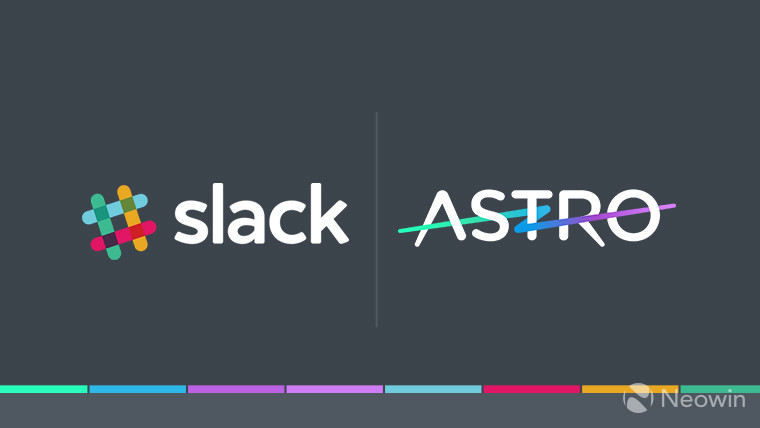In a landmark move that reshaped the landscape of workplace collaboration tools, Slack announced its acquisition of the intellectual property for Hipchat and Stride from Atlassian. This strategic partnership, unveiled in 2018, marked the end of an era for two of the earliest pioneers in team chat and signaled a major consolidation in a fiercely competitive market. While the business implications were widely discussed—solidifying Slack’s dominance and allowing Atlassian to focus on its core suite of developer tools—the story behind the headlines is one of immense technical complexity and engineering prowess. The process of migrating millions of users and terabytes of data from one ecosystem to another is a monumental undertaking.
This article delves beyond the corporate announcement to explore the unseen engineering challenges inherent in such a massive transition. We will use this acquisition as a case study to dissect the critical role of modern software debugging, from intricate backend debugging of data migration scripts to meticulous frontend debugging of user-facing tools. The successful sunsetting of Hipchat and the seamless onboarding of its user base onto Slack was not merely a feat of project management; it was a testament to sophisticated debugging techniques, robust error tracking, and a deep understanding of full-stack debugging. By examining the potential hurdles in areas like API debugging, database migration, and infrastructure scaling, we can extract valuable lessons and debugging best practices applicable to any large-scale software project, whether in JavaScript development, Python development, or Node.js development.
The Strategic Deal and the Engineering Mandate
The partnership between Slack and Atlassian was more than a simple acquisition; it was a strategic realignment. Atlassian, a giant in the world of developer tools with products like Jira and Confluence, had been a major player in team communication with Hipchat and its newer offering, Stride. However, Slack’s meteoric rise created a new center of gravity in the market. The deal involved Slack purchasing the IP for Hipchat Cloud, Hipchat Data Center, and Stride, with Atlassian discontinuing the products and taking a minority equity investment in Slack. This allowed both companies to focus on their strengths and deepen their product integrations.
From Competition to Collaboration: The User Migration Imperative
The most immediate and critical consequence of the deal was the mandate to migrate the entire user base of Hipchat and Stride to Slack. This wasn’t a simple “export and import” task; it involved moving millions of users, private conversations, public channels, files, and custom integrations without disrupting workflows or losing critical historical data. The success of the entire strategic partnership hinged on the execution of this migration. For the engineering teams at both Slack and Atlassian, this presented a series of formidable challenges requiring a mastery of code debugging and system-level problem-solving.
The migration path had to be meticulously planned, involving:
- Data Extraction: Building reliable tools to pull massive datasets from Hipchat’s infrastructure.
- Data Transformation: Mapping Hipchat’s data models (users, rooms, messages) to Slack’s equivalents (users, channels, messages), a process fraught with potential inconsistencies.
- Data Loading: Pushing the transformed data into Slack’s systems via their APIs, while handling rate limits, errors, and validation.
- User Experience: Creating a simple, intuitive interface for Hipchat administrators to initiate and monitor the migration process.
Each of these stages required its own suite of debug tools and a proactive approach to bug fixing, as a single error could result in data loss or a failed migration for an entire organization.
A Deep Dive into Full-Stack Migration Debugging

Executing a migration of this magnitude is a quintessential full-stack debugging challenge. Problems could arise anywhere, from a backend script failing on an edge case to a frontend component misinforming a user about migration status. The engineering teams would have relied on a combination of advanced debugging techniques and powerful tools to ensure a smooth process.
Backend Debugging: The Core of Data Integrity
The heavy lifting of the migration happened on the backend. Engineers likely developed a suite of scripts and services, possibly using Python or Node.js, to handle the data ETL (Extract, Transform, Load) process. The Python debugging and Node.js debugging efforts here would have been immense.
Consider a script designed to migrate a single Hipchat room to a Slack channel. It would need to handle:
- Fetching all messages, including user mentions and file attachments.
- Mapping Hipchat user IDs to their new Slack user IDs.
- Reformatting message content, as markup and features differed between platforms.
- Handling potential Node.js errors or Python errors related to network timeouts, database connection issues, or unexpected data formats.
A simple print statement in a debug console wouldn’t suffice. Engineers would use interactive debuggers (like PDB for Python or the Node.js inspector) to step through code, inspect variables, and analyze stack traces to pinpoint the root cause of failures. Comprehensive logging and debugging would be essential, capturing not just errors but also key milestones and data checksums to validate the integrity of the migration.
API Debugging: The Bridge Between Two Worlds
The entire migration process was orchestrated through APIs. The migration tools would make calls to Hipchat’s API to extract data and to Slack’s API to import it. This makes API debugging a critical skill. Teams would need to monitor for common API issues like authentication failures (401/403), rate limiting (429), server errors (5xx), and client-side errors from malformed requests (4xx). Tools like Postman or Insomnia would be invaluable for testing API endpoints in isolation, while application-level monitoring would be needed to track API health in real-time. Effective error messages from the APIs are crucial for quick diagnosis and resolution.
// Simplified JavaScript example of migrating a message
async function migrateMessage(hipchatMessage, userMapping) {
try {
const slackUserId = userMapping[hipchatMessage.senderId];
if (!slackUserId) {
// Log error: User not found in mapping table. Critical for debugging.
console.error(`User mapping failed for Hipchat ID: ${hipchatMessage.senderId}`);
return;
}
const response = await fetch('https://slack.com/api/chat.postMessage', {
method: 'POST',
headers: {
'Authorization': `Bearer ${process.env.SLACK_API_TOKEN}`,
'Content-Type': 'application/json'
},
body: JSON.stringify({
channel: 'C12345678', // Target Slack channel ID
text: hipchatMessage.text,
as_user: false, // Post as a bot representing the original user
username: hipchatMessage.senderName
})
});
const result = await response.json();
if (!result.ok) {
// This is a key part of API debugging: analyzing the error from the server.
// result.error might be 'channel_not_found', 'invalid_auth', etc.
throw new Error(`Slack API Error: ${result.error}`);
}
} catch (error) {
// Implement robust error tracking here instead of just console.log
// ErrorTrackingService.captureException(error);
console.error('Failed to migrate message:', error);
}
}
This example highlights the need for defensive coding and clear error handling, which are central to effective JavaScript debugging and API development.
Frontend and Browser Debugging: The User’s Window into the Migration
For the administrators triggering the migration, the user interface was their only connection to this complex backend process. This interface needed to be clear, reliable, and bug-free. This is where frontend debugging and browser debugging come into play. Developers would have used tools like Chrome DevTools extensively for:

- Network Debugging: Watching network requests in the “Network” tab to ensure the frontend was correctly communicating with the backend migration services.
- JavaScript Debugging: Using breakpoints in the “Sources” tab to step through UI logic, especially for handling asynchronous status updates. This is crucial for async debugging.
- DOM Inspection: Ensuring that progress indicators, success messages, and error notifications were rendered correctly.
- Framework-Specific Tooling: If the frontend was built with a modern framework, tools for React debugging or Vue debugging would be used to inspect component state and props.
Scaling, Performance, and Production Debugging
Beyond the migration logic itself, the teams had to ensure that Slack’s infrastructure could handle the sudden influx of millions of new users without a drop in performance. This requires a proactive approach to performance monitoring and production debugging.
CI/CD, Docker, and Kubernetes Debugging
Modern software deployment relies heavily on CI/CD pipelines and containerization. Any new code for the migration tools or adjustments to Slack’s core platform would go through a rigorous, automated pipeline. CI/CD debugging involves troubleshooting failed builds, tests, or deployments within this automated workflow. As Slack runs on a microservices architecture, likely using containers, skills in Docker debugging (inspecting logs and states of containers) and Kubernetes debugging (analyzing pod statuses, logs, and network policies) would be indispensable for the DevOps and SRE teams tasked with maintaining stability during the transition. This is a core part of modern system debugging.
Performance and Memory Debugging

Onboarding thousands of teams simultaneously puts immense strain on databases, caches, and application servers. The engineering team would use profiling tools to identify performance bottlenecks. This involves both static analysis of code and dynamic analysis of the running application. Debug performance tasks would include optimizing slow database queries, reducing API latency, and hunting for memory leaks. Memory debugging is particularly important in long-running services, as even small leaks can accumulate over time and cause system instability. Tools within Chrome DevTools and backend-specific profilers are used to take memory snapshots and identify detached DOM nodes or objects that are not being garbage collected.
Lessons for Developers: Debugging Best Practices
The Slack-Hipchat migration serves as a masterclass in large-scale software engineering. The principles applied here are relevant to developers working on projects of any size. Here are some key debugging tips and best practices to draw from this example:
- Implement Structured Logging Early: Go beyond simple print statements. Use a logging library to produce structured, searchable logs with different severity levels (info, warn, error). This makes logging and debugging in production environments manageable.
- Master Your Debug Tools: Whether it’s the interactive debugger in your IDE, the browser’s developer tools, or command-line utilities, proficiency with professional debug tools is non-negotiable. They are far more efficient than guesswork.
- Embrace Automated Testing: A comprehensive test suite is your first line of defense against regressions. Practice testing and debugging together, writing tests that expose bugs and then using the debugger to solve them. This includes unit test debugging and integration debugging.
- Utilize Error Monitoring Services: For any application that runs in production, an error monitoring or error tracking service (like Sentry, Datadog, or New Relic) is essential. They provide immediate alerts, aggregated reports, and rich context (like stack traces) for every error, dramatically speeding up bug fixing.
- Plan for Failure: In distributed systems and complex workflows like data migration, failures are inevitable. Design your systems to be resilient. Implement retries with exponential backoff for network requests and create dead-letter queues for tasks that fail repeatedly, allowing for manual inspection and remote debugging.
Conclusion
The acquisition of Hipchat by Slack was a defining moment in the evolution of digital workplaces. But beneath the surface of this business transaction lies a powerful engineering narrative. The successful migration of millions of users was a monumental achievement, made possible only through a deep, disciplined, and modern approach to application debugging. From the meticulous code analysis of backend scripts to the fine-tuning of infrastructure performance, every step was guided by the principles of identifying, isolating, and resolving issues efficiently.
For developers and engineering leaders, this story underscores a fundamental truth: robust debugging practices are not just about fixing errors; they are about managing complexity, ensuring reliability, and enabling ambitious technological change. The lessons in full-stack debugging, performance monitoring, and automated testing are universal, providing a blueprint for success in an increasingly complex software landscape.













